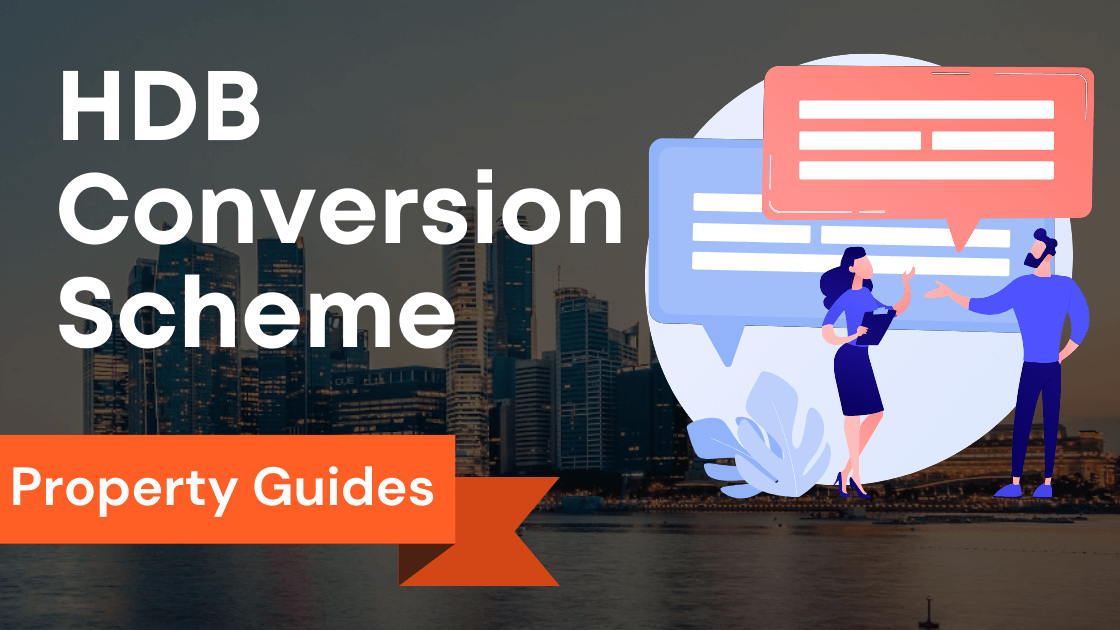What is PSI (Pollutant Standards Index)?
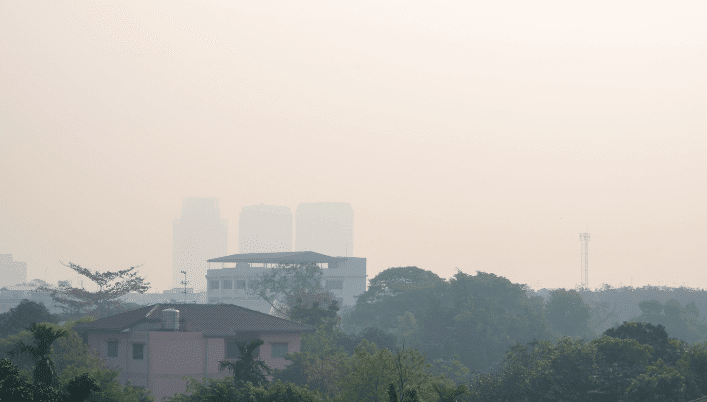
The Pollutant Standards Index (PSI) is a measure used to gauge the level of air pollution in a specific area.
It is commonly used in Singapore, where it provides the public with accurate information about the current air quality situation.
The PSI is calculated based on the 24-hour average concentrations of various air pollutants, such as particulate matter (PM) and ozone.
The index ranges from 0 to 500, with higher values indicating worse air quality.
Different levels of the PSI correspond to different health impacts and color-coded air quality descriptors, ranging from “Good” to “Hazardous”.
The PSI is updated on an hourly basis and is available on air quality websites and through the National Environment Agency of Singapore (NEA).
The index provides warnings of emergency conditions and helps the public make informed decisions about outdoor activities and appropriate measures, such as wearing suitable masks like AIR+ Smart Mask or surgical masks, to protect their health.
It also helps policymakers in implementing measures to reduce air pollution levels and mitigate the health effects associated with it.
PSI definition and calculation
The Pollutant Standards Index (PSI) is an air quality index commonly used in Singapore to measure and communicate the level of air pollution.
It indicates the current air quality and the potential health risks associated with exposure to pollutants.
The index is calculated based on the levels of pollutants such as carbon monoxide, sulfur dioxide, nitrogen dioxide, ozone, and particulate matter in the air.
The PSI is calculated using a predefined formula that takes into account the concentration of each pollutant.
Each pollutant is assigned a sub-index value based on its concentration, and transboundary, and the highest sub-index value is then used as the overall PSI value.
The PSI is classified into different bands or levels, ranging from good to hazardous, to indicate the severity of air pollution.
PSI levels in Singapore and their health effects
PSI levels in Singapore are categorized into six bands: Good (0-50), Moderate (51-100), Unhealthy (101-200), Very Unhealthy (201-300), Hazardous (301-400), and Extremely Hazardous (above 400).
Each band represents a different level of air pollution, with higher levels indicating increased health risks.
Exposure to high PSI levels can have various health effects, particularly on the respiratory system.
Fine particulate matter and pollutants such as carbon monoxide, sulfur dioxide, nitrogen dioxide, and ozone can cause or exacerbate lung diseases, respiratory infections, and cardiovascular issues.
Prolonged exposure to high PSI levels may also lead to more severe health outcomes, especially for vulnerable groups such as the elderly, children, and individuals with pre-existing respiratory conditions.
Public health studies have shown a correlation between elevated PSI levels and increased hospital admissions for respiratory-related conditions.
Individuals must stay informed about the PSI levels and take necessary precautions to protect their health during periods of high air pollution.
How to protect yourself from air pollution in Singapore
To protect yourself from air pollution in Singapore, especially during periods of high PSI levels, here are some recommended measures:
- Avoid outdoor activities: Limit your exposure to outdoor environments, especially during peak pollution hours when PSI levels are higher.
- Be aware of sensitive groups: People with pre-existing respiratory conditions, the elderly, pregnant women, and children should take extra precautions as they may be more susceptible to the health effects of air pollution.
- Minimize exposure to air pollution: Keep windows and doors closed, and use air purifiers or good quality air-conditioning systems with proper filters to minimize the entry of outdoor air pollutants into indoor spaces.
- Wear masks: Use masks specifically designed to filter out fine particulate matter and pollutants when you need to be outdoors during high PSI periods.
- Follow health advisories: Stay updated on health advisories issued by the National Environment Agency (NEA) and take necessary precautions based on the recommended guidelines.
http://www.youtube.com/watch?v=fWJj53jOVJI
By being aware of the PSI levels and taking appropriate measures to protect yourself from air pollution, you can reduce the potential health risks associated with exposure to pollutants in Singapore.
Key Takeaways
- What is PSI (Pollutant Standards Index)?
- PSI measures and communicates air pollution levels in Singapore.
- It considers pollutants like carbon monoxide, sulphur dioxide, nitrogen dioxide, ozone, and particulate matter.
- PSI levels range from Good to Extremely Hazardous.
- How to Protect Yourself from Air Pollution in Singapore
- During high PSI periods, limit outdoor activities.
- Sensitive groups (e.g., elderly, children) should take extra precautions.
- Use air purifiers and wear masks to minimize exposure.
- Follow health advisories issued by NEA.
- Air Quality Monitoring in Singapore
- Singapore uses the PSI to monitor air quality.
- PSI levels range from Good to Hazardous and are based on the concentrations of various pollutants.
- Where to Find PSI Readings
- PSI readings are available on the NEA website and various PSI websites and mobile apps.
- Check the 24-hour PSI forecast for updates, especially if you have health concerns.
- PSI Forecasting in Singapore
- PSI forecasting helps anticipate air quality conditions and provides a range of possible PSI values.
- It encourages individuals and organizations to take necessary precautions.
- Sources of Air Pollution in Singapore
- Air pollution sources include forest fires, smoke haze, particulate matter, carbon monoxide, sulphur dioxide, and nitrogen dioxide.
- Impact of Air Pollution on Health and the Environment
- Poor air quality can lead to respiratory issues and increased hospital admissions.
- Long-term exposure to air pollution can result in respiratory and cardiovascular diseases.
- What the Singapore Government is Doing
- The government has introduced measures like the Clean Air Act, promoting clean fuels, and investing in public transportation to reduce air pollution.
- PSI and Climate Change
- Climate change is affecting air pollution by increasing pollutant levels.
- Singapore is taking measures to mitigate these effects by setting emission standards and monitoring air quality.
- How Singapore is Adapting to Climate Change
- The government sets air quality targets and has launched the Sustainable Singapore Blueprint to promote sustainable practices.
- Individual Actions to Reduce Impact
- Individuals can limit vehicle use, conserve energy, reduce waste, and support clean energy initiatives to reduce their impact on air pollution and climate change.
- PSI Resources for Singaporeans
- Various websites, apps, government agencies, and NGOs provide PSI readings and air quality information.
- Tips for Staying Healthy During High Air Pollution
- During periods of high air pollution, stay indoors.
- Follow health advisories and use masks when necessary.
- Keep indoor spaces clean and take care of your health with a balanced lifestyle.
Air Quality Monitoring in Singapore
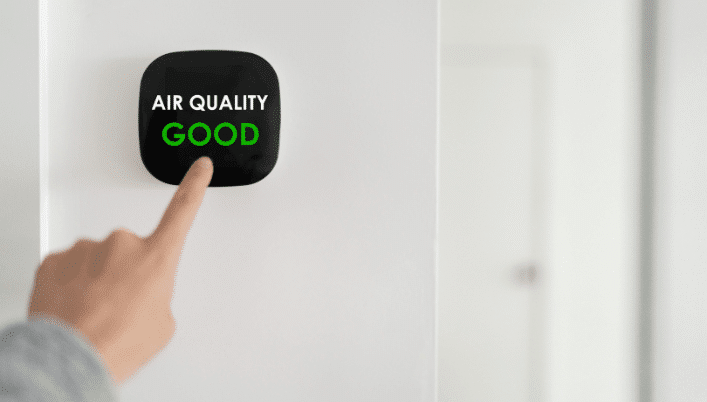
How PSI is monitored in Singapore
In Singapore, the air quality is closely monitored through the Pollutant Standards Index (PSI).
The PSI is a measurement system that provides information about the level of air pollution and its potential health effects.
The monitoring process involves assessing the concentration levels of specific pollutants in the air.
Singapore follows air quality guidelines set by the World Health Organization (WHO) and the National Environment Agency (NEA).
The PSI scale ranges from 0 to 500, with higher values indicating poorer air quality.
The PSI readings are categorized into several bands, including Good (0-50), Moderate (51-100), Unhealthy (101-200), Very Unhealthy (201-300), and Hazardous (301-500).
To determine the PSI, various parameters are measured, including the 24-hour PSI and the 24-hour particulate matter (PM) averages.
PM refers to fine particles suspended in the air, which can be harmful when inhaled.
The 24-hour PM concentration levels are measured in micrometers (µg/m³) and are used to calculate the PSI.
Singapore has a comprehensive air quality monitoring network consisting of monitoring stations strategically located across the island.
These stations continuously collect data on various air pollutants, including sulfur dioxide (SO2), nitrogen dioxide (NO2), ozone (O3), and particulate matter such as PM2.
5 and PM10.
This network provides accurate and timely information on the air quality across different regions of Singapore.
Where to find PSI readings in Singapore
If you are interested in knowing the current air quality in Singapore, you can easily access PSI readings through various platforms.
The NEA provides real-time Singapore PSI readings on their website, which is regularly updated.
Additionally, there are several PSI websites and mobile apps that provide PSI readings and air quality information.
These platforms offer user-friendly interfaces and allow users to view PSI readings, historical trends, and other relevant air quality data.
Furthermore, the NEA provides a 24-hour PSI daily forecast, which gives an overview of the expected air quality for the day.
This forecast takes into account the current PSI and weather conditions to provide an estimation of the air quality levels.
It is advisable to check the PSI forecast regularly, especially if you have health concerns or plan outdoor activities.
PSI Forecasting in Singapore
The PSI forecasting in Singapore helps to anticipate the air quality conditions in the coming hours.
The NEA issues 24-hour PSI readings and health advisories, which provide information on the expected air quality and any precautions that individuals should take.
The forecasts include a range of possible PSI values, taking into consideration the variability of the weather conditions and air pollutant levels.
By forecasting the PSI, individuals and organizations can take necessary precautions to minimize exposure to poor air quality.
This includes staying indoors, reducing physical exertion, and wearing masks when necessary.
The PSI forecasting system plays a crucial role in raising awareness about air pollution and encouraging proactive actions to protect public health.
http://www.youtube.com/watch?v=wt_UiabuWiU
In conclusion, air quality monitoring in Singapore utilizes the PSI as a measurement system to assess the level of air pollution.
The PSI readings can be easily accessed through various platforms, including the NEA’s website, PSI websites, and mobile apps.
The PSI forecasting system provides valuable information about expected air quality and helps individuals and organizations take necessary precautions.
By staying informed about the air quality, people can make informed decisions to protect their health and well
Air Pollution in Singapore
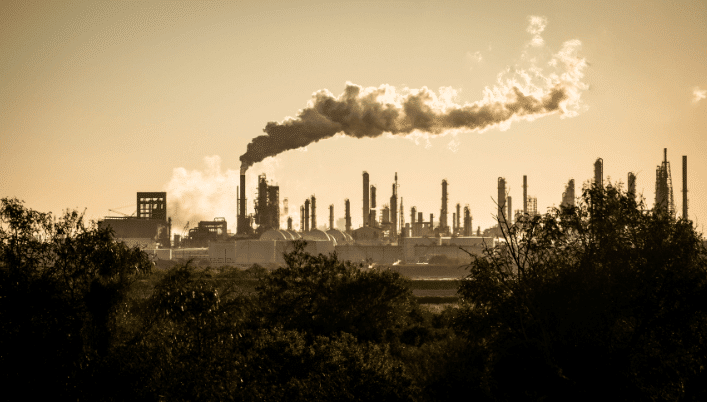
Sources of Air Pollution in Singapore
Singapore, known for its clean environment, also faces challenges when it comes to air pollution.
The main sources of air pollution in Singapore include forest fires, smoke haze, particulate matter, carbon monoxide, sulfur dioxide, and nitrogen dioxide.
Forest fires in neighboring countries, particularly in Indonesia, contribute significantly to the smoke haze that affects Singapore.
These fires release pollutants into the air, including fine particulate matter, which can be harmful to human health.
Impact of Air Pollution on Health and the Environment
Air pollution can have detrimental effects on both human health and the environment.
In Singapore, poor air quality due to pollution has been associated with respiratory symptoms and increased hospital admissions for respiratory illnesses.
Studies have shown that long-term exposure to air pollution can lead to respiratory and cardiovascular diseases, as well as worsen existing conditions such as asthma.
To mitigate the effects of air pollution, the Singapore government has implemented various pollution control measures.
These measures include setting pollutant standards and implementing regulations to limit pollutant emissions from industrial activities and vehicles.
Singapore’s National Environment Agency (NEA) monitors air quality through the Pollutant Standards Index (PSI) and provides regular updates to the public.
What the Singapore Government is Doing to Reduce Air Pollution
The Singapore government has taken several steps to reduce air pollution and protect public health.
Singapore has implemented the Clean Air Act, which regulates the emission of pollutants from various sources.
Industrial activities are required to comply with emission standards, and vehicle emissions are also regulated.
In addition to the Clean Air Act, the Singapore government has introduced additional measures to address air pollution.
These measures include promoting the use of cleaner fuels, implementing vehicle emission standards, and investing in public transportation infrastructure to reduce reliance on private vehicles.
The government’s commitment to sustainability is evident in initiatives like the Sustainable Singapore Blueprint.
This blueprint outlines the government’s strategies to improve air quality and reduce carbon emissions.
The NEA, along with other government agencies, works towards achieving these goals by implementing policies, conducting research, and promoting public awareness of air quality and pollution control.
By implementing stringent regulations and actively monitoring air quality, Singapore strives to maintain its reputation as a clean and green city.
While challenges such as forest fires and regional haze persist, the government’s efforts to reduce air pollution are aimed at safeguarding the health and well-being of its residents and maintaining a sustainable environment.
PSI and Climate Change

How climate change is affecting air pollution in Singapore
As the effects of climate change become more pronounced, they are having a direct impact on air pollution in Singapore.
Rising temperatures and changing weather patterns contribute to increased levels of pollutants in the air.
For example, higher temperatures lead to higher levels of ground-level ozone, a harmful pollutant formed when sunlight interacts with pollutants like carbon monoxide.
Additionally, climate change can affect the emission of pollutants from various sources, such as transportation and industry, due to changes in weather conditions.
To mitigate the impact of climate change on air quality, Singapore has implemented strict emission standards for vehicles and industries.
The National Environment Agency (NEA) regularly monitors and regulates these standards to ensure that pollution levels are kept within acceptable limits.
This includes setting limits on the amount of carbon monoxide and other pollutants that can be emitted.
How Singapore is adapting to the impacts of climate change on air quality
Singapore has taken proactive measures to adapt to the impacts of climate change on air quality.
The government has set air quality targets and established the Pollutant Standards Index (PSI) to measure and communicate air pollution levels to the public.
The PSI is calculated based on the concentrations of six pollutants: sulfur dioxide, particulate matter, nitrogen dioxide, carbon monoxide, ozone, and volatile organic compounds.
To further address the issue, Singapore has launched the Sustainable Singapore Blueprint, which outlines strategies and initiatives to promote sustainable development and reduce environmental impact.
The blueprint includes measures to improve air quality, such as reducing emissions from vehicles and promoting the use of clean energy sources.
The NEA plays a crucial role in implementing these initiatives and monitoring air quality throughout the country.
What individuals can do to reduce their impact on air pollution and climate change?
While the government plays a significant role in mitigating air pollution and climate change impacts, individuals can also contribute to reducing their impact.
Here are some actions individuals can take:
- Limiting vehicle use and opting for environmentally friendly transportation options like walking, cycling, or using public transport.
- Conserving energy by using energy-efficient appliances and practicing energy-saving habits at home or in the workplace.
- Reducing waste generation and practicing proper waste disposal methods, such as recycling and composting.
- Being mindful of personal activities that contribute to air pollution, such as idling cars, burning waste, or excessive use of aerosol products.
- Supporting and advocating for policies and initiatives that promote clean energy and sustainable practices.
In conclusion, as climate change continues to impact air quality, individuals, communities, and governments must work together to reduce air pollution and mitigate climate change effects.
Through collective efforts, Singapore can continue to adapt to the challenges posed by climate change and ensure a cleaner and healthier environment for its residents.
PSI Resources for Singaporeans
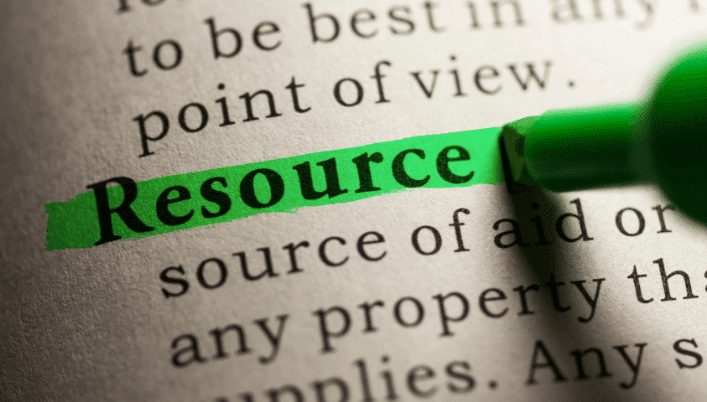
PSI Websites and Apps
In Singapore, the Pollutant Standards Index (PSI) is a vital tool used to monitor the air quality and provide information to the public.
There are various websites and apps available that provide up-to-date PSI readings and Singapore air quality data.
These resources are essential for Singaporeans to stay informed about the current air pollution levels and take necessary precautions.
The National Environment Agency (NEA) of Singapore offers an official PSI website and mobile app.
These platforms provide real-time PSI readings, 24-hour PSI trends, and health advisories.
They are easily accessible and user-friendly, allowing individuals to stay updated on the air quality conditions conveniently.
Other independent websites and apps also provide PSI readings and air quality data.
These include platforms like PSI Singapore, which offer detailed information and historical PSI records.
These resources often provide additional features like customizable notifications for specific PSI ranges or locations, helping individuals plan their activities accordingly.
Government Agencies and NGOs Working on Air Quality in Singapore
In addition to the NEA, there are several government agencies and non-governmental organizations (NGOs) actively working to monitor and improve air quality in Singapore.
The United States Environmental Protection Agency (EPA) collaborates with the NEA to share expertise and develop strategies to combat air pollution.
Singapore Health Services (SingHealth) also plays a crucial role in educating the public about the health impacts of poor air quality.
The NEA is the primary authority responsible for ensuring clean air and managing environmental pollution in Singapore.
They conduct regular air quality monitoring, issue health advisories, and enforce pollution control measures.
Their efforts focus on maintaining compliance with air quality standards and promoting sustainable practices.
Tips for Staying Healthy During Periods of High Air Pollution
During periods of high air pollution, it is essential to take extra precautions to protect your health.
Here are some tips for staying healthy:
- Stay indoors: If the air quality is poor, it is best to stay indoors as much as possible to minimize exposure to pollutants.
- Follow health advisories: Stay updated on the latest health advisories provided by the NEA or other relevant authorities, and follow their recommendations.
- Use masks: When venturing outdoors during periods of high air pollution, consider wearing masks that are specifically designed to filter out pollutants.
- Keep indoor spaces clean: Ensure good ventilation in indoor spaces, use air purifiers if necessary, and keep doors and windows closed to prevent pollutants from entering.
- Take care of your health: Eat a balanced diet, stay hydrated, and engage in regular exercise to maintain overall well-being, which can help the body cope with the effects of air pollution.
It is crucial to prioritize your health and take necessary precautions during episodes of high air pollution.
By staying informed and following these tips, Singaporeans can minimize the potential health risks associated with poor air quality.
Conclusion
Pollutant Standards Index (PSI) in Singapore
In conclusion, the Pollutant Standards Index (PSI) plays a crucial role in monitoring and managing air quality in Singapore.
It uses a comprehensive system to measure pollution levels for the major air pollutants and provides index figures that enable the public to determine whether the air quality is healthy or hazardous.
The PSI takes into account the ambient air concentration of five air pollutants, including sulfur dioxide, nitrogen dioxide, particulate matter (PM10 and PM2.5), carbon monoxide, and ozone.
The PSI is regulated under the Clean Air Act in Singapore, and daily levels of air pollution are continuously monitored by the National Environment Agency (NEA).
The NEA uses the PSI to assess the level of air pollution and issue appropriate health advisories to protect public health.
The computation of the PSI involves assigning sub-index values to each pollutant based on their respective concentrations.
These sub-index values are then combined using a formula to derive the overall PSI number on a scale ranging from 0 to 500.
The highest PSI indicates the pollutant with the highest index value.
Motor vehicles are a significant source of air emissions in Singapore, contributing to the pollution levels in the city-state.
Efforts have been made to regulate vehicle emissions through stringent emission standards and encourage the use of cleaner fuels and technologies.
The effects of short-term exposure to high levels of air pollution can have adverse health effects, particularly on individuals with respiratory conditions and the elderly.
The PSI enables the public to stay informed about the air quality and take necessary precautions, such as reducing outdoor activities or wearing masks when the PSI reaches unhealthy levels.
Overall, the Pollutant Standards Index in Singapore plays a crucial role in measuring pollution levels and ensuring the well-being of its citizens.
Providing real-time information and health advisories, helps individuals make informed decisions to protect their health and contributes to maintaining Singapore’s air quality standards.
With the ongoing effort to reduce air pollution and promote sustainable practices, Singapore continues to strive for cleaner and healthier air for its residents and visitors.
Frequently Asked Questions
What is the pollutant standards index (PSI)?
The pollutant standards index (PSI) is a measurement used to assess and communicate the air quality in Singapore.
It indicates the level of pollutants in the ambient air.
How is the PSI calculated?
The PSI is computed for each pollutant based on its respective concentration in the air.
The index value for each pollutant is then translated into a PSI reading, which ranges from 0 to 500.
What are the different levels of PSI?
The PSI has six levels: Good (0-50), Moderate (51-100), Unhealthy (101-200), Very Unhealthy (201-300), Hazardous (301-400), and Very Hazardous (above 400).
What does the PSI level indicate?
The PSI level indicates the air quality in Singapore.
It gives an understanding of the concentration of pollutants in the ambient air and helps to determine if the air quality is safe or harmful.
What is the significance of the 1-hour PM2.5 reading in the PSI?
The 1-hour PM2.5 reading is an important component of the PSI. PM2.5 refers to fine particulate matter with a diameter of 2.5 micrometers or smaller.
High levels of PM2.5 can have adverse effects on health, particularly for individuals with chronic lung diseases.
Is the PSI based on real-time data?
Yes, the PSI is based on real-time air quality data.
It is continuously updated to reflect the current air quality conditions in Singapore.
What is the significance of the air quality index (AQI)?
The air quality index (AQI) is a numerical value that indicates the level of pollution in the air.
It is used to assess and compare the air quality in different locations or regions.
How does Singapore measure air quality?
Singapore has a network of air monitoring stations that measure the levels of pollutants in the ambient air.
The data collected is used to calculate the PSI and provide information on the air quality in different areas of the country.
What are the air quality targets for Singapore?
Singapore aims to achieve and maintain good ambient air quality standards.
The air quality targets are set based on the World Health Organization guidelines and local considerations.
Who uses the PSI in Singapore?
The PSI is used by the Singapore government, health groups, and the public to assess the air quality and make informed decisions regarding outdoor activities and personal health precautions.












